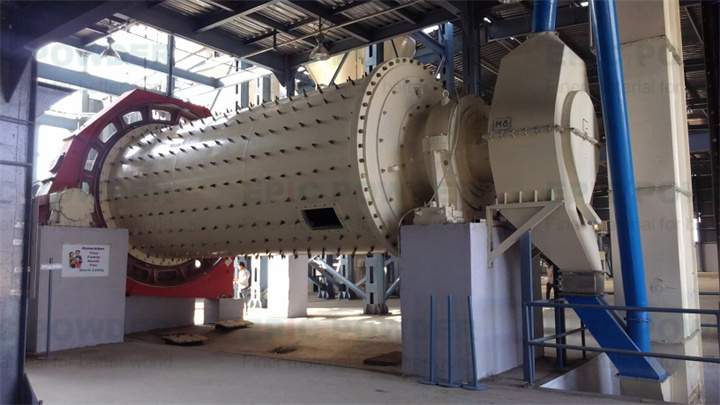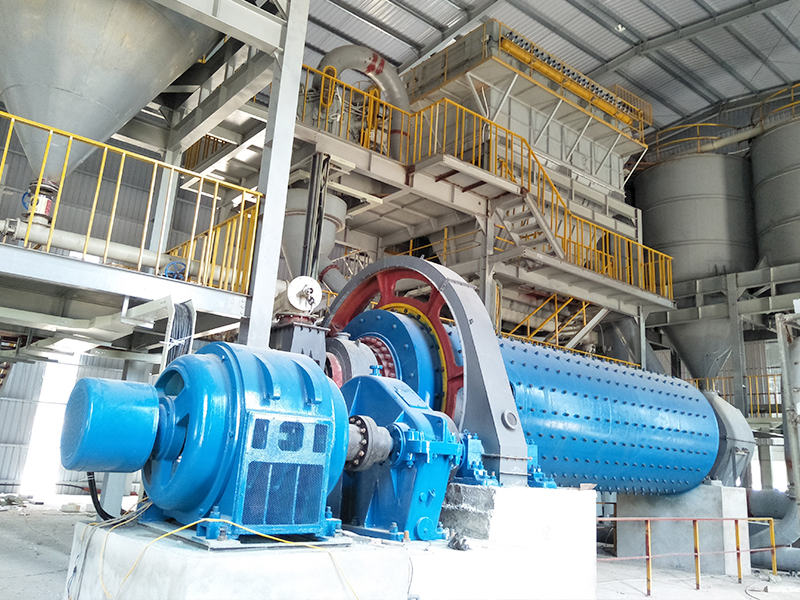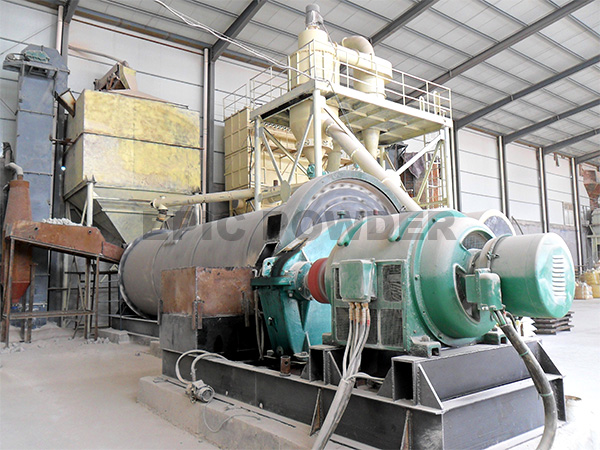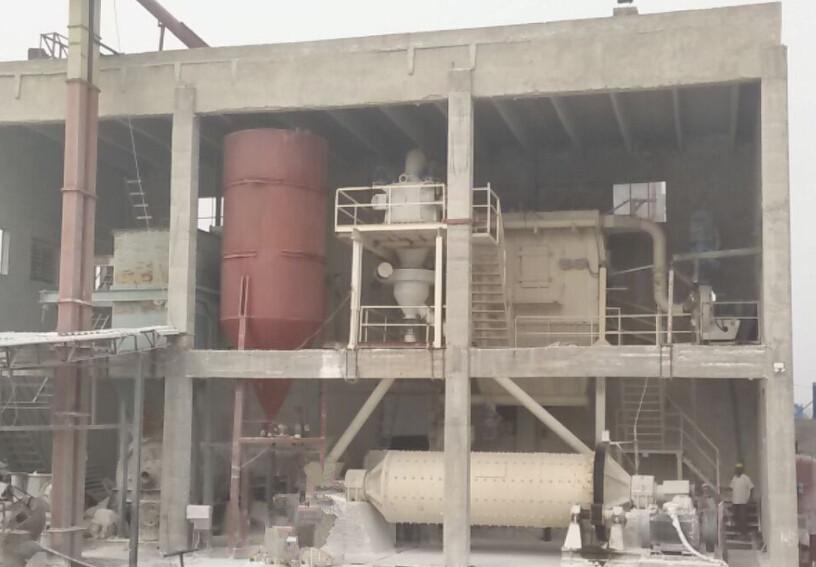NO. 369, Road S209, Huanxiu, Qingdao City, China
Ultrafine non-metallic mineral powder,Ultrafine powder

Research status of preparation of ultrafine non-metallic mineral powders
Ultrafine non-metallic mineral powderUltrafine powder refers to a series of ultrafine materials with particle sizes ranging from micrometers to nanometers. At present, the wide application of non-metallic mineral powder in modern high-tech new materials is premised on its unique function. However, the function of most non-metallic minerals depends on the particle size, distribution and particle shape. Such as reinforcement or reinforcement in polymer-based composite materials, strength and toughness of ceramic materials, covering rate, tinting strength as paper and paint pigments, and electrical, magnetic, optical, wave absorption and shielding of powders , catalysis, adsorption, rheology, antibacterial, decolorization, bonding, etc. are all related to their particle size, particle size distribution and particle shape.
Because ultrafine powder has large specific surface area, high surface activity, fast chemical reaction speed, low sintering temperature, high sintered body strength, good filling and reinforcing performance, and high coverage rate, it has excellent physical and chemical properties. Many application fields require fine particle size (micron or submicron) of non-metallic mineral raw (material) materials.
At present, according to the consensus of my country's mineral processing industry, ultrafine powder is defined as powder with a particle size of 100% less than 30 μm. According to the different particle sizes, ultrafine powders can be divided into: micron (particle size 1-30 μm), submicron (particle size 1-0.1 μm) and nano-level (0.001-0.1 μm). Ultrafine non-metallic mineral powders show great advantages in optical, magnetic, acoustic, electrical and mechanical properties, and have been widely used in medicine, chemical industry, electronics, energy and other fields.
Processing of ultrafine non-metallic mineral powder
There are many preparation methods for ultrafine powder, which can be divided into three categories according to the formation medium: gas phase method, liquid phase method and solid phase method. The gas phase method includes high-frequency induction heating technology, plasma preparation technology, etc., and is suitable for the preparation of ultrafine powders with high purity, narrow particle size distribution, small particle size and uniform particle size distribution; liquid phase methods mainly include chemical liquid phase reduction method, Sol-gel method, ultrasonic atomization method and hydrothermal method, etc.; solid-phase method mainly adopts mechanical pulverization method.
In terms of preparation principle, the preparation of ultrafine powder can be divided into chemical method and physical method. The chemical method is to prepare the required ultrafine powder through chemical reaction, through the formation and growth of ions, atoms, etc. through the crystal nucleus. The advantage is that it can prepare ultrafine powder with high purity, small particle size, narrow particle size distribution and good morphology. The disadvantage is that the output is low, the cost is high and the process is complicated; the physical method is to pulverize the material through the action of mechanical force. The advantage is that the cost is low, the process is relatively simple, the output is large, and it is suitable for large-scale industrial production. Moreover, the mechanochemical effect is produced during the pulverization process, which can improve the activity of the powder [2-3].
At present, in the processing of ultrafine non-metallic ore powder, physical method is the main preparation method. And generally speaking, the process of making raw materials into ultra-fine powder is mainly divided into two steps: pulverization and classification. The material first enters the ultrafine pulverizing equipment for pulverization. Due to the different structure of each particle, the energy required for pulverization is different, and the force received in the pulverizing equipment is not equal, so the shape and size of the fine particles after pulverization are different. , only some of the particles meet the particle size requirements. In the actual production process, the particles are often fully pulverized by extending the pulverization time to make them meet the particle size standard, which not only increases the energy consumption, but also may lead to excessive pulverization. Therefore, it is necessary to separate the particles with the required particle size in time, so the ultra-fine classification technology also plays an important role in the preparation of ultra-fine powder [4].
Research status of ultrafine crushing equipment
At present, the commonly used ultrafine grinding equipment mainly includes impact mill, stirring mill, jet mill and vibration mill.
1. Impact mill
The impact mill uses the revolving body (rod, hammer and blade, etc.) rotating at high speed around the horizontal or vertical axis to produce strong impact and shear on the material, so that it has a strong relationship with the wall or fixed body and particles. The ultrafine crushing equipment that crushes the particles by the impact collision can be used for the crushing of medium hardness materials, such as talc, marble and calcite. The particle size of the feed is generally within 8mm, and the particle size of the product can reach 3-74μm.
The main advantages of impact mills are adjustable fineness, simple structure, compact installation, easy operation, small footprint and high efficiency; the disadvantage is that overheating will occur during high-speed operation. Therefore, when improving the equipment, the cooling method can be considered. At the same time, in order to avoid large wear of the parts, materials with good compression and wear resistance should be used.
2. Stirring mill
Stirring mill is one of the ultra-fine pulverizing equipment with development prospects. Type stirring mill, batch stirring mill, circulating stirring mill, continuous stirring mill, etc.
On the whole, the stirring mill mainly stirs the grinding medium (steel balls, zirconia balls, ceramic balls, corundum balls and gravel, etc.) and materials filled in the barrel through the rotation of the stirring shaft to make it move in the barrel. It is mostly used for deep processing of non-metallic minerals, preparation of pigments, etc. The particle size of the feed is generally within 3mm, and the particle size of the product is between 0.1 and 45μm. The key process parameters that affect the grinding effect of an agitator mill include agitator speed, slurry concentration, material-to-ball ratio, media properties and residence time.
Compared with traditional ball mills, stirring mill grinding has more significant advantages:
①When the stirring mill is working, the cylinder is fixed and the agitator rotates, which solves the problem of large energy loss caused by the rotation of the ball mill cylinder;
②Compared with the ball mill, which combines impact pulverization and grinding, the stirring mill mainly relies on the grinding action supplemented by a small amount of impact to achieve material pulverization, which alleviates the energy consumption caused by sound, heat and vibration, and improves the fine grinding efficiency;
③The agitator mill equipment occupies a relatively small area, has a simple structure, and is convenient and quick to install.
3. Vibration mill
The vibrating mill is an ultra-fine pulverizing equipment with balls or rods as the medium, and the fineness of the processed products can reach several microns. The working principle is to use the grinding medium to impact, grind and shear the materials in the high-frequency vibration cylinder. , so that the material is crushed in a short time. It can be widely used in ultrafine powder processing in chemical, metallurgy, building materials, ceramics, refractory materials and non-metallic minerals. The particle size of the feed is generally within 6mm, and the particle size of the product is between 1 and 74μm. Vibration mills have the advantages of small size, low energy consumption, high output, compact structure, simple operation, convenient maintenance and uniform product particle size, etc., but the disadvantages are high noise and high requirements for parts [5].
4. Jet mill
The working principle of the jet mill is to accelerate the airflow through the nozzle, and the ejected jet drives the material to move at a high speed, so that the material collides, rubs and shears and pulverizes it. It can also be used in the processing of health food, rare earth and chemical raw materials in the ultrafine crushing of minerals. The feed particle size is generally controlled below 1mm, and the finished product particle size is between 1 and 30μm, but the production capacity is small.
The jet mill has the advantages of high degree of automation and large production capacity, but the disadvantages are high equipment cost, large floor space, large energy consumption, less high-fineness products, large wear of parts and lack of independent innovation models. Because the jet mill is the most researched, most complete model, and relatively mature ultrafine grinding equipment in China, it is very popular in the market. At present, the jet mill can be divided into: horizontal disc type (flat type) jet mill according to its structure or working mode. Circulating tubular jet mill, counter-jet jet mill, target jet mill, Fluidized Bed Jet Mill, etc.
5. Other equipment
Planetary ball mill: The structure of planetary ball mill is mainly divided into two types: vertical type and horizontal type. Its single grinding cylinder is geometrically similar to that of ordinary ball mill. The difference is that each grinding cylinder of planetary ball mill needs to revolve while rotating. The high grinding capacity and high energy utilization rate of planetary ball mill make it widely used in the preparation of ultrafine powder, mechanochemistry, mechanical alloying and other application fields. Suitable for high hardness materials, the particle size can reach 0.1μm. The characteristic is that the grinding medium is easy to wear and is suitable for small batch production.
Ring roller mill: In essence, ring roller mill is a small and medium-sized ultra-fine grinding equipment. In the course of years of development, the application range of ring roller mill has gradually expanded, and it has shown more and more obvious equipment advantages. From the perspective of its specific application effect, the process operation is relatively simple, and the crushing ratio is relatively large, and the unit energy consumption during the processing operation is low, which meets the requirements of energy saving and environmental protection. According to the current application of ring roller mill in the processing of non-metallic ore powder, the feeding particle size should not exceed 20mm, and a classification device is installed inside the equipment, so that the product fineness can be effectively adjusted according to the standard during the processing process.
No matter how the powder industry develops, the main method to obtain ultrafine non-metallic mineral powder is still mechanical pulverization. "If a worker wants to do a good job, he must first sharpen his tools." In the future, we should strengthen basic theoretical research and increase investment in science and technology, optimize technological processes on the basis of existing equipment, continuously improve innovation capabilities, and develop ultra-high-tech, green economy, low energy consumption, low emissions, and high added value. Fine crushing equipment.
Research status of ultra-fine grading equipment
The classification of ultra-fine powder is based on the centrifugal force, gravity, inertial force, etc. of different particle sizes in the medium, resulting in different motion trajectories, so as to realize the separation of different particle sizes and enter into their respective collection devices.
Ultra-fine grading is generally divided into dry type and wet type according to the different media used. Wet classification uses liquid as the dispersion medium, with high classification accuracy and good uniformity. However, wet classification has a series of subsequent operation problems such as drying and wastewater treatment, which limits its development.
According to different classification principles, dry classification equipment can be divided into three types: inertial type, jet type and centrifugal type. Among them, according to the different inertia of particles with different particle sizes, a classifier that applies force to move the particles in different directions to achieve classification is called an inertial classifier. A classifier that comprehensively uses the principles of Coanda effect, inertial classification and rapid classification is called a jet classifier. Because the centrifugal force field is usually stronger than the gravitational field, the centrifugal classifier is a type of ultrafine classifier that has been developed more. According to the difference of the flow field in the centrifugal force field, it can be divided into two types: forced vortex and free vortex (or quasi-free vortex). Although dry classification has the disadvantages of easily causing air pollution and low classification efficiency, because it uses air as a medium, the cost is low, and no post-processing such as drying and redispersion is required, and the classification process is simpler, more efficient and energy-saving, so it is widely used. It is used in the field of powder preparation.
At present, the widely used classification equipment in industrial production is the turbine Air Classifier, which can be divided into vertical wheel type and horizontal wheel type according to the different installation forms of the classification wheel.
The grading wheel of the vertical wheel classifier is usually cantilevered, and there will be some problems during the operation, such as the increase in the size of the grading wheel will easily lead to imbalance, the main shaft and the bearing will be easily broken due to excessive load and the sealing effect will be poor. The grading wheel of the horizontal wheel classifier is installed horizontally, which can maintain stable operation even when the rotation speed is high, and the sealing effect is greatly improved. Long life and other advantages [4].
With the development of the vortex Air Classifier, scholars have improved it through a lot of theoretical and practical research, effectively improving its classification accuracy and classification efficiency. For example, by adding a tertiary air flow, the coarse particles falling along the cone are elutriated to improve the separation efficiency. The representative model is the O-Sepa vertical wheel classifier developed by Onoda Corporation of Japan.
In addition to optimizing the structure, size, structure and operating parameters on the basis of the original rotor classifier, some scholars have also developed new dynamic classifiers by adding internal components and changing the direction of airflow inlet and outlet.
As far as the current research situation is concerned, the future research directions mainly include three aspects: regulating and classifying flow field, optimizing separation process, and coupling and classifying mixed flow patterns.
Epilogue
In recent years, as the country attaches great importance to the development and utilization of non-metallic mine resources, the related non-metallic mineral powder processing industry has ushered in a new development and achieved outstanding achievements. In the process of years of exploration and practice, the ultra-fine processing technology of non-metallic ore powder has become more and more mature, and there are more and more technical processes and equipment on the market. In the process, it is necessary to make comprehensive choices in terms of technology, process and equipment according to its own production reality and needs, and strengthen the control of relevant parameters and process adjustment in the processing process.




Leave a Comment